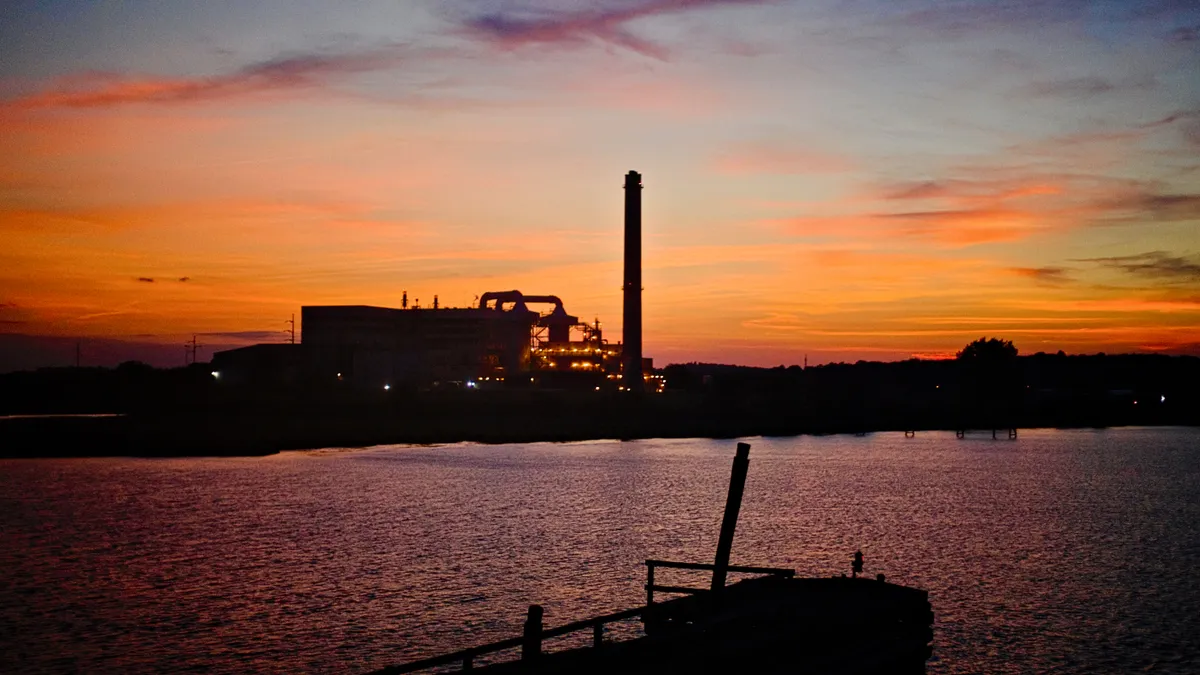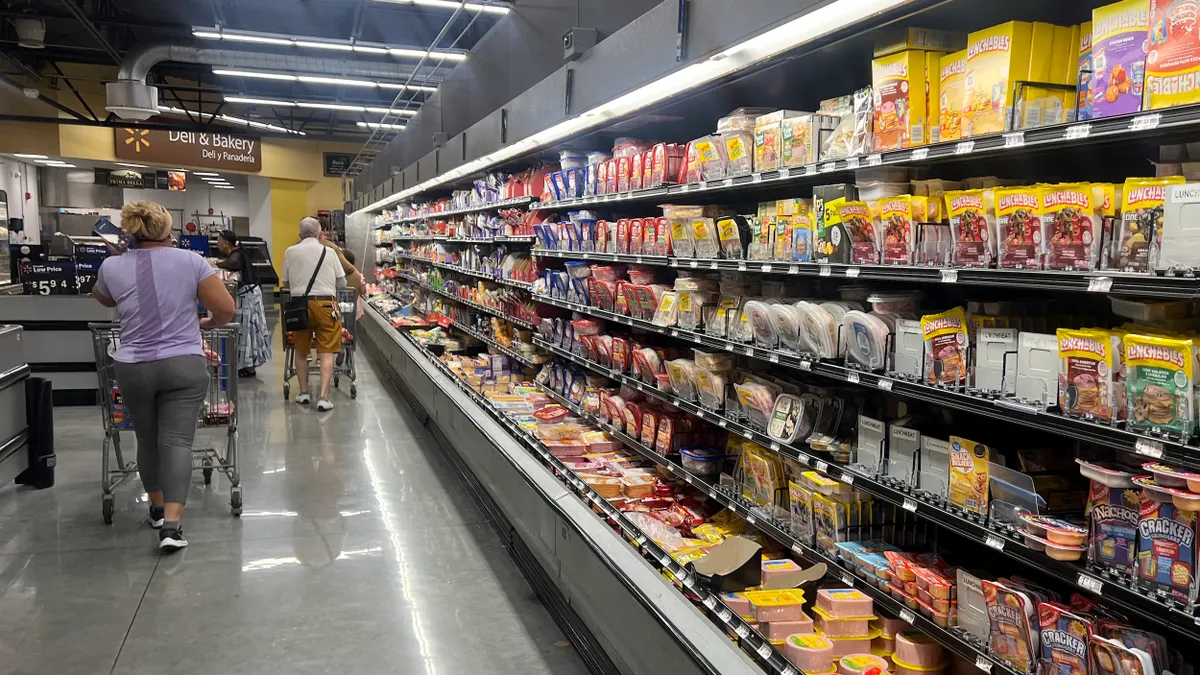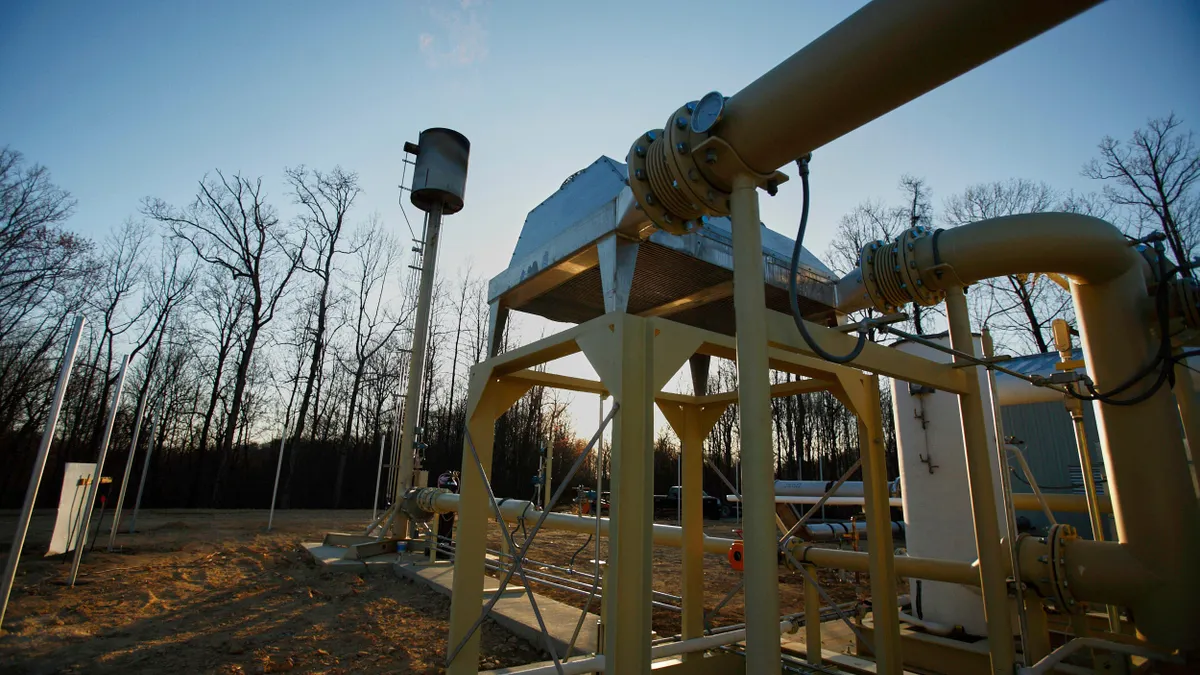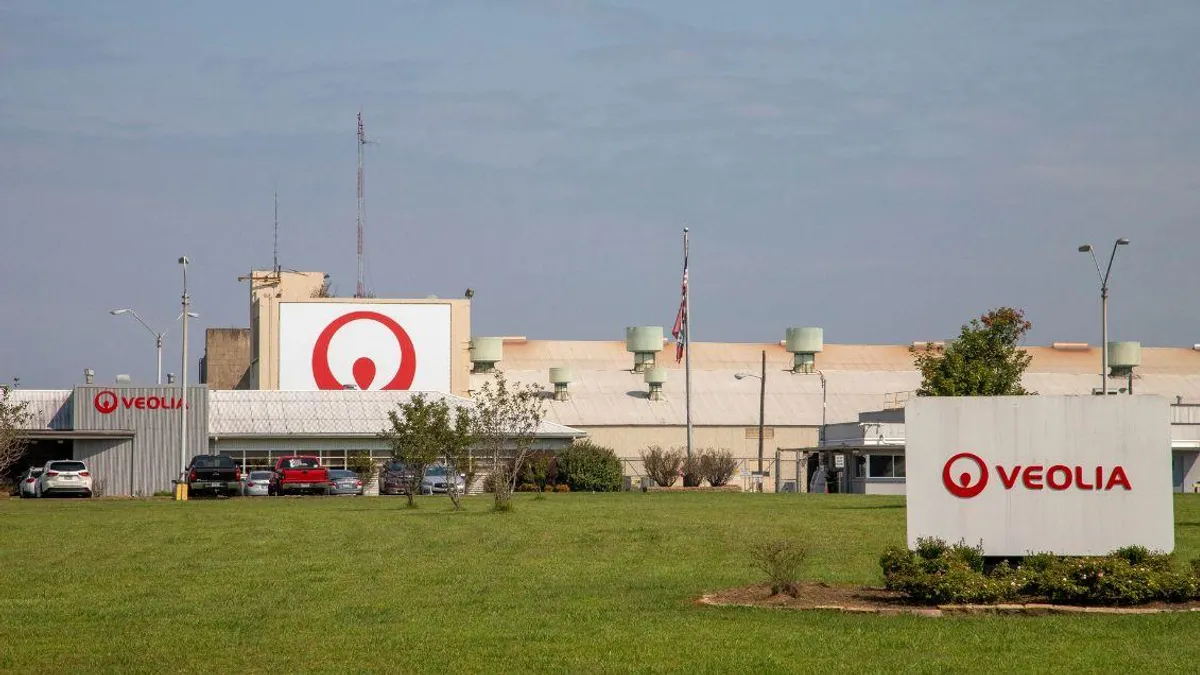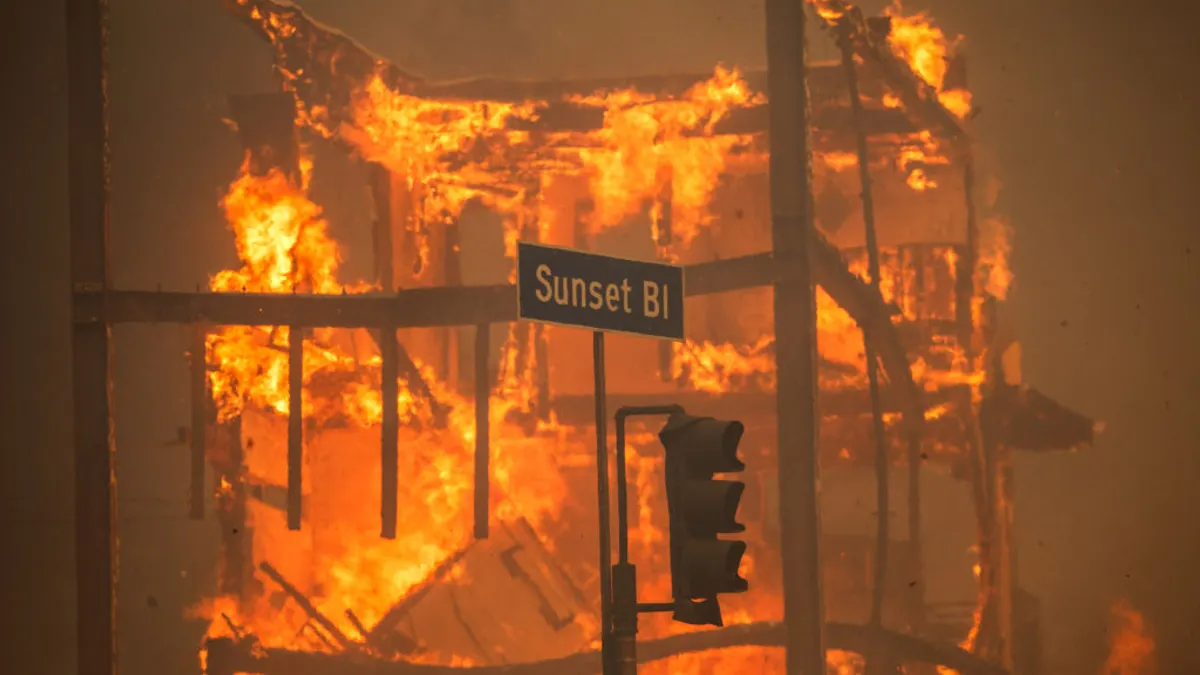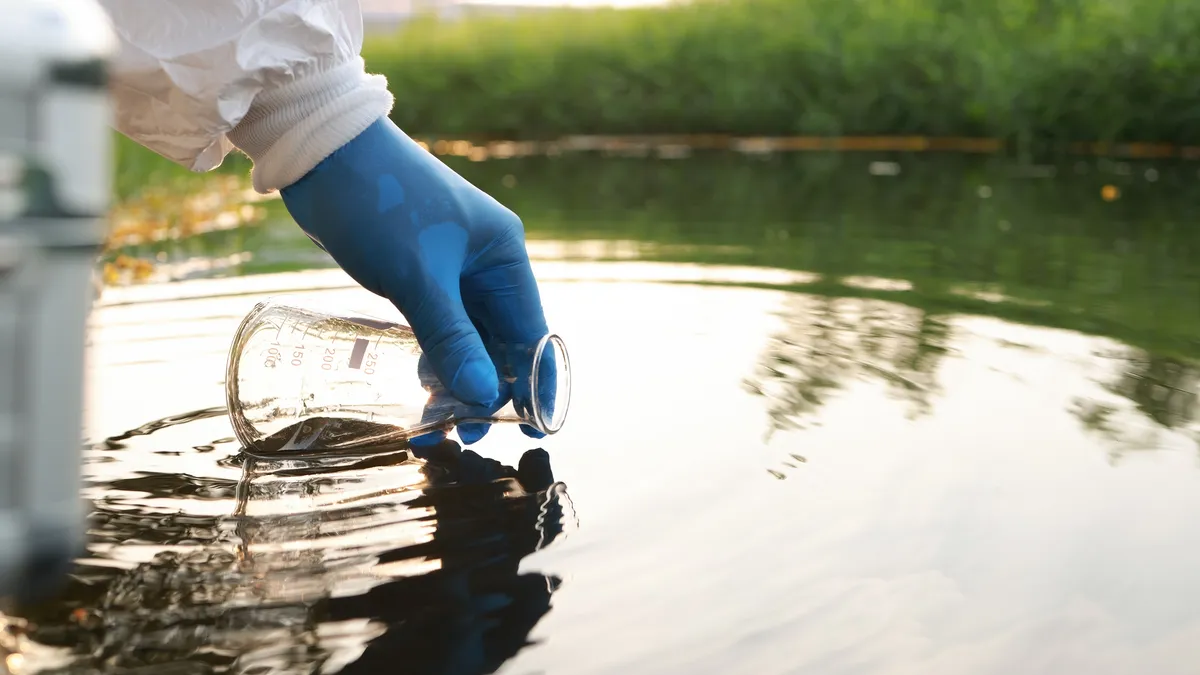The U.S. debate over the merit of waste-to-energy (WTE) technologies has been stagnant for years, with no confirmed projects on the horizon as landfills continue to expand in many parts of the country. Backers of WTE facilities recognize it will be a difficult task, but they are renewing efforts to reframe the scientific discussion around how communities handle their waste that can't be easily recycled.
Construction on a new wave of mass burn combustion plants, the type of facility most commonly cited in the category of waste to energy, is underway in the U.K. and other countries that are seeking to move away from landfills. While the U.S. EPA has long listed "energy recovery" technologies above disposal on its waste hierarchy, that trend is heading in the opposite direction domestically.
Aside from a Florida project in 2015, no new construction has occurred in years, and the list of active U.S. WTE sites continues to shrink – it's now down to just over 70 after multiple facility closures in recent years. Community opposition is a common factor in many cases, often centering around concerns about cost, emissions and environmental justice. At the same time, WTE supporters believe growing attention to the climate effects of landfill methane emissions could create an opening.
"Waste is not going to evaporate, it’s not going to go away," said Marco Castaldi, a professor of chemical engineering at the City College of New York, who recently released a report gathering the latest scientific data on technologies commonly placed in the WTE category. "That’s the goal of this document, make sure that holistic look of all possible solutions is brought in as rigorously as possible. Then whatever you value in the municipality, make that decision."
According to Castaldi's review of existing research, when WTE is coupled with metal recovery, it can offset one ton of carbon dioxide (CO2) for every ton of waste processed. The paper highlights additional research on how WTE facilities have lower greenhouse gas (GHG) emissions than landfills from a life cycle inventory standpoint, including scenarios with landfill gas capture factored in via the U.S. EPA's Municipal Solid Waste Decision Support Tool. It also notes how the Intergovernmental Panel on Climate Change recognizes WTE as more positive from a GHG standpoint, and it makes numerous arguments about how the sites can be less burdensome on communities.
This list of potential benefits mirrors stances that large WTE companies such as Covanta and WIN Waste Innovations are featuring with greater prominence in their messaging. It also tracks with the opinion of certain large cities that view WTE as a better option than landfills in order to meet their climate or zero waste goals. But so far none of it has quelled vocal opposition to the technology.
Within recent months, local officials, activists and community members have protested existing facilities in states including Massachusetts, Pennsylvania and Maryland, and national environmental groups have doubled down on their opposition. In the view of many groups, the only path forward is to avoid the need for any new disposal capacity by maximizing waste reduction, reuse and recovery.
“Incinerators and landfills are kind of duking it out for last place as far as what we should be doing around waste management... Those are the two worst things to do with waste," said Neil Tangri, science and policy director at the Global Alliance for Incinerator Alternatives (GAIA), adding that to achieve net zero emissions by 2050, "we need landfills to stop emitting and we need incinerators to stop emitting."
Companies in the latter category maintain they can play a role in mitigating climate change, especially if carbon capture technology advances, and they point to landfills as the main issue. At the same time, landfill operators state they can mitigate these emissions with gas capture systems that will produce energy or fuel.
In response to the current state of play, a new group is forming to bring what it views as needed perspective to the U.S. discussion around "advanced thermal treatment" — the terminology it prefers for modern facilities — rather than "incineration."
"Landfills are more polluting than waste-to-energy facilities," said Philipp Schmidt-Pathmann, founder and CEO of the new Institute for Energy and Resource Management (IeRM). "Landfills will have an impact on society pretty much forever. It’s a cost that will never stop."
IeRM recently launched with what it says will be a growing board of U.S. and international waste management professionals. That list currently includes Castaldi, as well as top environmental policy experts from Germany and others. The group's goal is to raise awareness about integrated waste management systems that prioritize reduction and recycling. After that, they believe the remaining material should go to a properly scaled WTE facility that can destroy any pathogens, similar to setups in some European countries.
“We want to present the scientific facts and clear the air about some old misconceptions about waste to energy," said Steve Gerritson — IeRM board member and treasurer, and former vice president of the Economic Development Council of Seattle and King County in Washington — adding that initial projects will be focused on "reducing greenhouse gas emissions and a better use of our resources to both improve environmental quality and improve economic performance on the municipal and state level."
The landfill comparison
The current U.S. materials management landscape – in which an estimated 50% of MSW goes to landfills, 12% goes to WTE and the remainder is recycled, composted or handled through other food management pathways – has been relatively static for years. Within the disposal categories, WTE is often compared with landfilling on three measures: energy generation and material recovery, health effects and GHG emissions.
Some WTE facilities were built in response to concerns about landfill capacity in prior decades, and they remain key elements of waste disposal infrastructure in denser population centers along the East Coast. Another driver was favorable energy markets, hence the sector's preferred branding of "waste-to-energy" or "energy-from-waste," but the emergence of cheaper power alternatives has greatly affected energy revenues in the years since.
Covanta Chief Operating Officer Derek Veenhof called the latter point out in a June panel at WasteExpo's investor summit, saying "the big hurdle for us here has been natural gas pricing; energy pricing has been a killer." He estimated this shift affected free cash flow by $120 million or more, and that trend is being seen across the board.
"While the energy has value, it’s not going to have near the economic value it had 20 or 25 years ago," said Steve Simmons, president of consulting firm Gershman, Brickner & Bratton (GBB). "I think the industry does have to pivot, it does have to be supported on tip fees and other value-added activities like metals recovery."
Simmons, who started his career at a WTE facility in the 1980s, said technology has evolved notably beyond just recovering ferrous metals from ash to also focus on recovering nonferrous metals, including precious metals such as gold, silver and palladium. "While that may not have a big revenue impact, it can have a huge cost-reduction impact because you’re not putting it in the landfill," he said, referencing the need to dispose of residual ash from WTE facilities. Castaldi also sees potential for facility operators to use the energy they generate to power processes that may enhance value, such as changing the oxidation state of certain metals.
The potential to recover more metals from WTE was also highlighted by the federal Advanced Research Projects Agency–Energy last year via research funding and a supportive blog post, but energy generation was not the lead argument. The Clean FUTURE Act, introduced in Congress this year, labels WTE as a renewable energy source – similar to existing policies in some states – but groups such as GAIA strongly oppose such a designation. Tangri published a paper earlier this year making the case that WTE is more polluting than any other form of renewable energy (including landfill gas) and should be excluded from such policy designations.
Beyond the energy comparison, another key concern opponents often raise is health effects. GAIA and other regional environmental or community groups commonly bring this up in campaigns, linking potential respiratory illness and cancer among area residents to specific WTE facilities and comparing their emissions profiles to that of coal-fired power plants.
Facility operators commonly say such claims don't have merit. Castaldi's paper states multiple international studies found "human health effects cannot be directly connected to properly operating WTE facilities." When health effects occur, they may be limited or possibly related to other local emissions, it says. It does note how one study of four WTE facilities in Seoul may have found a relationship to additional deaths, but it says that model was based on regulatory limits which the sites were outperforming, and it highlights multiple North American studies where effects couldn't be clearly linked.
WTE facility operators for years have maintained such positions, but opponents say regulatory limits are too lax or don't account for possible releases that may occur before or after plant shutdowns.
"We don’t really know what their emissions are just because they’re meeting a standard... and often a lot of these places, they don’t meet the standard, even under these conditions," said Tangri. He added that it's also important to view the emissions through a lens of environmental justice in communities with high concentrations of industrial facilities.
“It’s the cumulative impact. It’s happening on top of all the other environmental burdens that they live with."
In response, Castaldi said emissions around startup and shutdown can indeed be higher or lower than normal – and it's a subject that merits further discussion – but he said this is factored into regulatory oversight and represents "a very small percentage to the normal 24/7 operating conditions of a facility." He and others also note such facilities have seen substantial reductions in emissions over the years due to updated air quality standards and emissions technology.
Various experts and consultants say one reason WTE facilities receive more attention is they have a stack that releases clear signs of activity, while landfills don't, and they are also more apt to be located near population centers. GAIA and related groups describe that argument as a deflection tactic.
"Climate is becoming more and more the bottom line on everything. So if you have a business that is a major source of emissions, you’ve got to have a story as to why that’s not such a bad thing ...especially if you’ve got a big smokestack," said Tangri.
Landfill emissions and leachate mismanagement can also have health implications when not properly managed, but those issues are more often raised on a case-by-case basis rather than in a broad critique as seen with WTE. And proponents tout WTE sites' location in or near urban centers, saying it cuts down on emissions from truck traffic moving waste to distant landfill sites, while opponents consider that an environmental justice issue.
This facet of the debate gets at what may be the biggest issue of all – how to compare GHG and other emissions from landfills to those at WTE facilities. The life cycle analyses and comparisons quickly get complicated, but multiple pieces of research show landfills are more potent GHG generators.
Recent studies in California, Maryland and elsewhere have brought renewed attention to the large role landfills play in methane generation, but questions remain about the accuracy of landfill emissions measurements. Unlike WTE emissions assessments, landfill emissions assessments are generally based on models because it's not feasible to take readings across large sites that span many acres. The waste industry feels the U.S. EPA's models overestimate the emissions, while others say the models are underestimating.
Bryan Staley, CEO of the Environmental Research & Education Foundation (EREF) said this idea of it being harder to measure emissions from landfills versus WTE facilities may soon be a thing of the past.
“While it’s a valid argument historically, I think, moving forward, it’s not going to be a valid argument because these technologies have really changed the game on measuring whole landfill emissions," said Staley, referencing satellites and drones. At the same time, he cautioned against relying on snapshots versus more continuous measurements.
Staley said the position paper from Castaldi summed up existing information and discussions that have been going on for years, and he pointed to recent research out of North Carolina State University as one of the more intriguing additions to that dialogue. Looking specifically at seven categories of environmental impacts from different forms of handling the organic fraction of MSW, the paper found WTE technologies had the lowest impacts and landfills had the highest.
“Just because waste to energy is ranked at the top doesn’t necessarily mean that landfills are underperforming, depending on how you look at it," he said, adding that landfills with gas capture systems are also found to have carbon offset benefits depending on the scenario.
While landfill gas-to-energy systems are increasingly common due to regulatory trends and rising financial opportunities, Staley noted the sites "do face some operational challenges with implementing the gas collection technologies" in a way that can capture emissions quickly. Under the best-case scenario, he said, it can generally take two years to fully get a system into place once a cell has begun receiving material.
As to what this all means for the future of WTE, Staley said it's likely the current debate will continue as it has for the time being. “I think it’s certainly a hot-button issue in the U.S. because landfilling is generally so cheap," he said, adding WTE is broadly accepted in Europe, and science "bears out that it definitely offers environmental benefits."
Looking ahead
This debate over the role of WTE facilities is expected to continue in a similar fashion over the years ahead.
Opponents will seek to force sites to close through activism against contract renewals with local governments, as well as around permit decisions and through related lawsuits. Proponents will say facilities are meeting regulatory requirements; they'll raise the specter of long-haul landfill exports if WTE facilities close down and they'll say modern projects are far more advanced than existing sites. Landfill operators will continue saying they have the more cost-effective solution, even as groups such as IeRM and others maintain this comparison doesn't fully account for externalities.
As seen with a new report about the underperformance of plastic recycling in five cities with WTE facilities, GAIA and related groups plan to continue pushing for reduction, reuse and recycling efforts that decrease reliance on disposal destinations. If a more significant shift in the waste stream eventually occurs, then Castaldi and others say it's possible mass burn facilities would need to rethink their heating values or systems — but they don't expect that to happen any time soon.
In some cases, communities have also pursued, or are considering, disposal alternatives to landfills and mass burn combustion. Collection specifications vary depending on the technology, but common categories include pyrolysis, gasification, mechanical biological treatment and or refuse-derived fuel applications. For communities weighing these options, multiple experts recommended a cautious, case-by-case approach with a possible backup plan in mind.
“If you’re a community in the Northeast, and the closest landfill is in Ohio, you want to be very careful and have very proven technology. If the community is going to, in the end, back the bonds directly, or make investments, you want to understand that risk," Simmons said.
Earlier this year, the EPA released an assessment of such technologies to help communities make waste management decisions. That research described mass burn combustion as "low risk" – in terms of financial investment, not health effects – when compared with other categories. It also reiterated that landfills are greater GHG emitters than WTE or other conversion technologies, while repeatedly noting the need for ongoing research and saying comparisons all depend on the type of feedstock involved.
Susan Thorneloe, a senior chemical engineer with the EPA's Office of Research and Development, suggested communities use the agency's decision support tool to weigh these complex, long-term decisions.
"The tool allows users to consider existing waste infrastructure and can be used to develop more sustainable – and resilient – options for solid waste management by minimizing discards and maximizing energy and resource recovery, while also considering potential [environmental justice] concerns and economics," Thorneloe said in a statement.
The EPA paper maps environmental justice profiles for conversion technologies using its EJScreen tool. It found about 25% of all assessed facilities were in low-income areas, and "older technologies such as mass burn are more often surrounded by denser populations." Thorneloe was not aware of a comparable mapping for all U.S. landfills, but she said "many landfills have not been allowed to expand due to environmental justice concerns."
However, the EPA's paper also notes "conversion technologies will not eliminate the need for landfill disposal" because residual streams are still created. With this in mind, Thorneloe said it's especially important to focus on the mitigation and measurement of landfill emissions.
"Although we continue to work to reduce what is discarded and minimize what is ultimately landfilled, there will always be a role for well-designed and operated landfills," she wrote.
The report also notes the emergence of alternatives is unlikely: "As long as the cost of landfills do not consider the environmental externalities such as increased carbon emissions per ton of waste, the technologies described in this report will have a more difficult time being cost competitive." Landfill critics believe this is a key example of why disposal tip fees could be artificially low in some cases; landfill operators say they are priced accordingly and follow state or local policy requirements.
King County, Washington, the home base of IeRM's Schmidt-Pathmann, has grappled with this discussion for years as its landfill nears capacity. Last month, a county councilmember introduced legislation to establish an advisory committee focused on the possibility of WTE in the area. IeRM believes it's well-suited to help lead this process, if plans move forward, as part of a broader mission to provide research and objective information about landfill alternatives.
“There’s such a huge gap in political know-how on the topic and how the topic has been hijacked to special interests," said Schmidt-Pathmann, who believes many local government officials and the consultants they work with are biased toward landfills. "The public is the one that has paid the price."
Covanta also recently described Florida as an area where new development could occur, and the company's pending sale to EQT Infrastructure could be a sign the parties involved see a future for expansion beyond current construction projects in the U.K. In another sign that the sector remains financially attractive to certain investors, WIN Waste has hinted at possibly going public and has said it would also be interested in expanding its list of WTE facilities if the right conditions ever align.
While Simmons of GBB said it's true landfill companies have a large voice in the discussion, he noted many local communities may still favor landfilling as well. The consulting firm is seeing some communities consider upgrades or changes to existing WTE facilities, such as one in Michigan, but new ones are unlikely to happen in the U.S. in the near term barring a major national shift.
“It’s going to take federal policy," said Simmons, adding that that would more likely come in the form of greater limitations on landfills than in direct support for WTE, but the latter is also a long shot. "Landfill restrictions will be hard because there are so many communities that rely on landfills, that have made direct investments in landfills."


